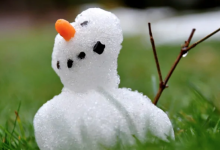Pilfering from puffins: How sneaky seagulls steal for survival
Puffins do all the hard work, while seagulls swoop in and reap the rewards.
Nobody knows that more than Memorial University student Kaylee Busniuk, who has spent the last two summers studying the behaviour of birds on Gull Island in Witless Bay, south of St. John’s.
She wanted to know more about kleptoparasitism — a form of feeding in which one animal takes another’s food. In this case, gulls taking from puffins after they’ve made an effort to get food.
For humans, it would be like going through the trouble of grocery shopping, only to get robbed in the parking lot.
“If you had all the costs associated with that [purchase], and they get the free meal,” Busniuk said.
Of the three types of seagulls in Newfoundland and Labrador, Busniuk focused on herring gulls.
They perch on the same cliffs where puffins nest, and wait for a puffin to return from open water with a fish in its mouth.
“That’s when they’re most susceptible to kleptoparasitism because gulls are already standing on the slope and can just lunge over [and] grab them,” she said.
According to Busniuk, the study of sneaky gulls began after a surge in the seagull population in the 1970s. Researchers were worried about what that might do to the puffin population, as it coincided with a 30 per cent reduction in breeding.
By the 1990s, it was established that puffins weren’t all that affected by the routine thievery.
Busniuk was interested in finding out if the gulls targeted any puffins in particular, and found specific gulls have specific strategies.
“Some of the gulls, I think they train their chicks, honestly,” she said with a laugh. “Because their chicks are running around on the slope, and you see the gull attack a puffin and then bring it over to the chick and feed it.”
Later in the season, she noticed chicks mimicking the same thieving behaviour as their parents.
As for defence mechanisms, Busniuk said puffins sometimes pull up at the last second and fly back out to sea. They circle and come back in again, and hope the seagulls had lost interest.
To keep track of the birds, Busniuk put coloured jelly in the grass on the cliffsides and waited for them to land in it. When the jelly connected with birds’ bellies, it left a distinctive mark on each one.
The jelly was harmless, and wore off after a week or two.
“Last year, if there was any funny coloured gulls in your pictures, that was me,” she said.








Redes Sociais - Comentários